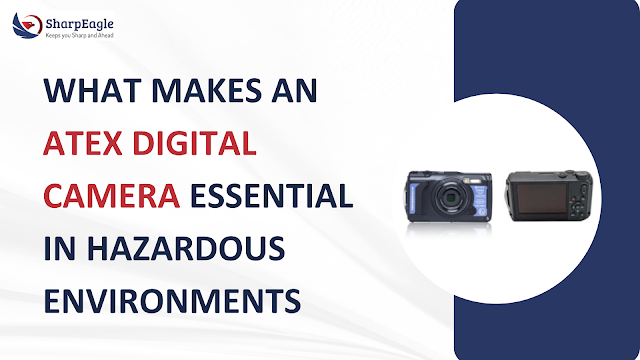Why Explosion Proof Lights Are Essential in Hazardous Areas
In industries such as oil and gas, mining, chemical manufacturing, and refineries, safety is not just a priority — it’s a necessity. One of the most critical safety measures in such high-risk environments is reliable lighting that can withstand extreme conditions. This is where explosion proof lights come into play.
Explosion proof lighting is specifically designed to prevent ignition of hazardous substances in areas where flammable gases, vapors, dust, or fibers may be present. It plays a crucial role in ensuring workplace safety, maintaining compliance with regulations, and minimizing the risk of accidents and damage.
What Are Explosion Proof Lights?
Explosion proof lights, also known as flameproof or hazardous location lighting, are fixtures engineered to contain any explosion that may originate within the housing, thereby preventing the ignition of the surrounding hazardous atmosphere. They are not “explosion resistant” in the sense of withstanding an external blast, but rather built to avoid triggering one.
These lights are certified for use in hazardous locations, defined by zones or classes depending on the presence and frequency of explosive elements. For example, Zone 1 and Zone 2 are common classifications in areas where explosive gases are likely to be present.
Why Hazardous Areas Require Special Lighting
In hazardous environments, even a small spark from a faulty light fixture can lead to catastrophic consequences. Electrical equipment, including standard lighting, can become a source of ignition if not properly protected.
Here’s why explosion proof lighting is vital:
1. Prevention of Explosions
The core purpose of an explosion proof light is to ensure that if a spark or flame is generated inside the fixture (due to a fault or short circuit), it will not ignite the surrounding atmosphere. The fixture’s housing is designed to cool escaping gases below ignition temperature and prevent any explosion from spreading.
2. Compliance with Safety Standards
Using explosion proof lighting is a legal requirement in many industries operating in hazardous zones. Standards like ATEX (in Europe) and IECEx specify the safety requirements for equipment used in explosive atmospheres. Failure to comply can result in penalties, shutdowns, or legal action.
3. Durability in Extreme Conditions
Explosion proof lights are built using robust materials such as aluminum alloy, stainless steel, or tempered glass, which offer excellent resistance to heat, corrosion, and mechanical impact. This durability ensures longer service life and reduced maintenance, even in the harshest industrial settings.
4. Enhanced Safety for Workers
Proper illumination is crucial for worker safety, especially in complex environments where visibility is compromised by dust, fumes, or poor lighting. Explosion proof lighting ensures that critical operations can be carried out safely without risk of ignition, creating a secure work environment.
5. Operational Continuity
An explosion in an industrial facility doesn’t just threaten lives — it can halt operations, damage assets, and lead to huge financial losses. Explosion proof lighting systems help prevent such disruptions, supporting continuous, safe production workflows.
Applications of Explosion Proof Lights
Explosion proof lights are used in a wide range of industries and applications, including:
- Oil & Gas Rigs
Offshore and onshore platforms are prime candidates for explosion proof lighting due to high concentrations of flammable gases and liquids. - Chemical Plants
With volatile chemicals in use, explosion proof light systems are essential for safe operation and emergency preparedness. - Mining Sites
Dust, gas, and poor visibility make explosion proof lighting a necessity in underground and surface mining operations. - Fuel Stations & Storage Facilities
Any site handling petroleum products must have lighting that won’t ignite fumes during normal or abnormal operating conditions.
Types of Explosion Proof Lighting
There are various types of explosion proof lights tailored to different requirements:
- Explosion Proof LED Flood Lights
Ideal for large area illumination with energy efficiency and long lifespan. - Explosion Proof Emergency Lights
Ensure visibility and safe evacuation during power outages or emergencies. - Explosion Proof Exit Signs
Help direct personnel toward safe exits in case of fire or gas leaks. - Explosion Proof Flashlights & Handhelds
Portable options for inspections and maintenance in confined or remote zones.
Choosing the Right Explosion Proof Light
When selecting explosion proof lights, consider the following:
- Hazard Classification: Ensure the fixture is certified for your specific zone or class.
- Material & Build: Corrosion-resistant, waterproof, and vibration-proof designs are best.
- Light Output & Efficiency: LEDs are a preferred option for lower energy consumption and longer life.
- Certifications: Look for ATEX, IECEx, UL, or equivalent compliance marks.
- Mounting Options: Wall, ceiling, pole, or portable, depending on application.
Conclusion
In hazardous environments, investing in the right safety measures is non-negotiable. Explosion proof lights are not just lighting fixtures — they are life-saving equipment designed to operate safely in the presence of explosive materials. From compliance to safety and durability, explosion proof lighting ensures that high-risk operations can continue without compromising human lives or business assets.
If your facility operates in explosive or flammable zones, switching to certified explosion proof light solutions is a proactive step toward a safer and more secure work environment.
Explore SharpEagle’s range of ATEX-certified explosion proof lighting solutions designed for industrial safety and reliability.




Comments
Post a Comment